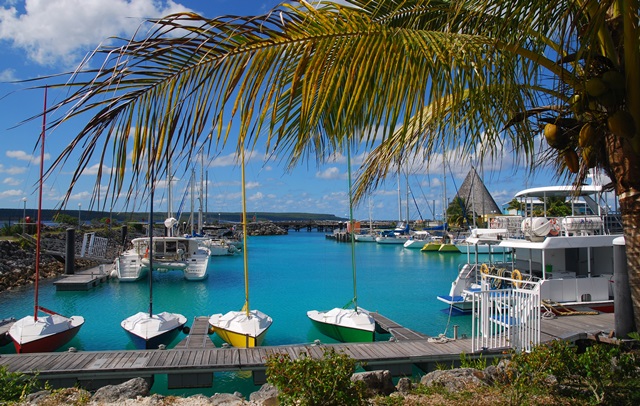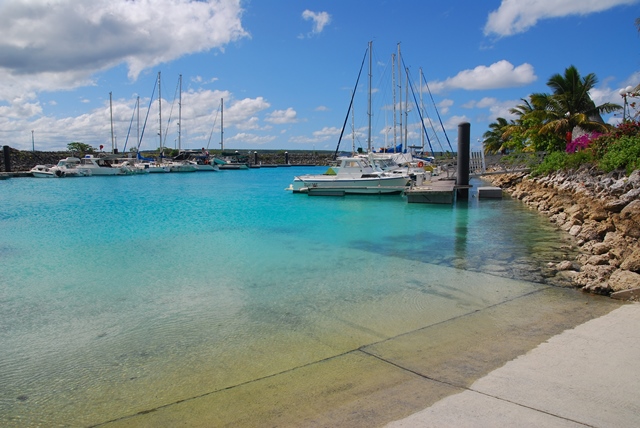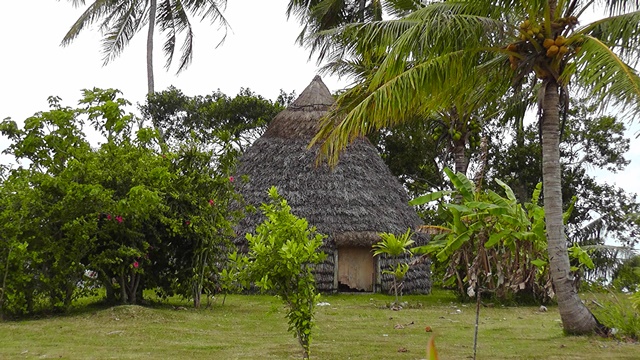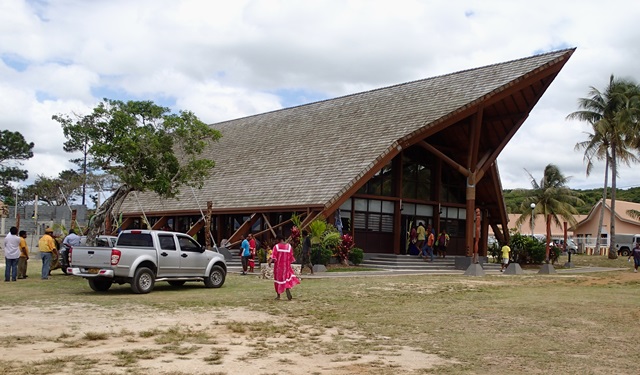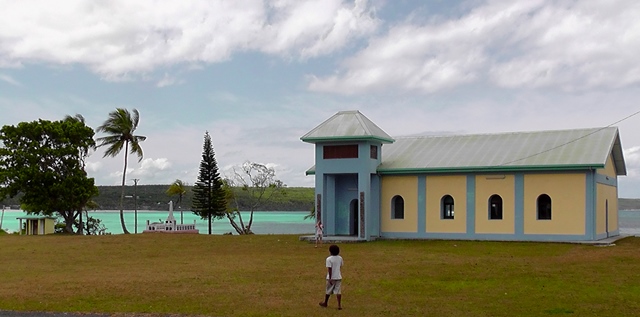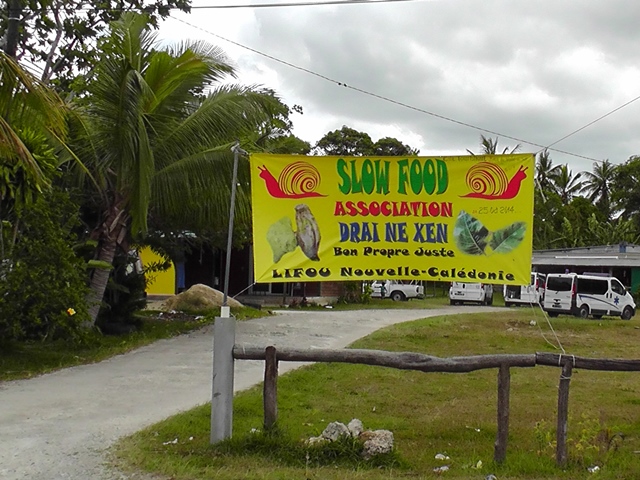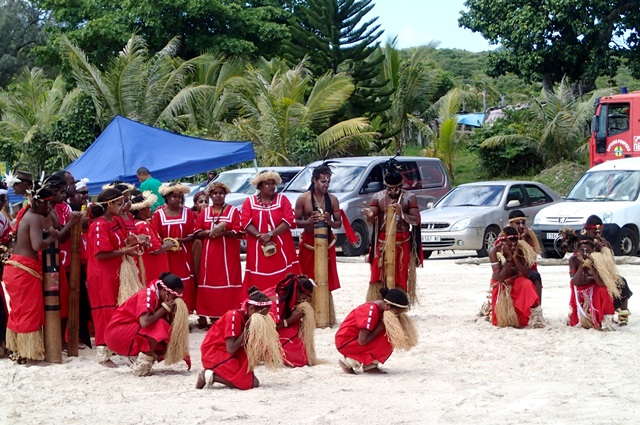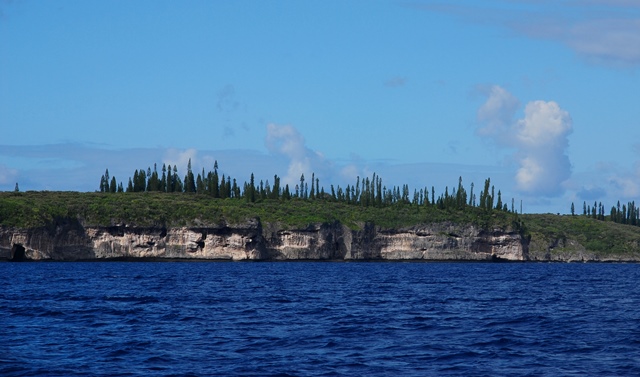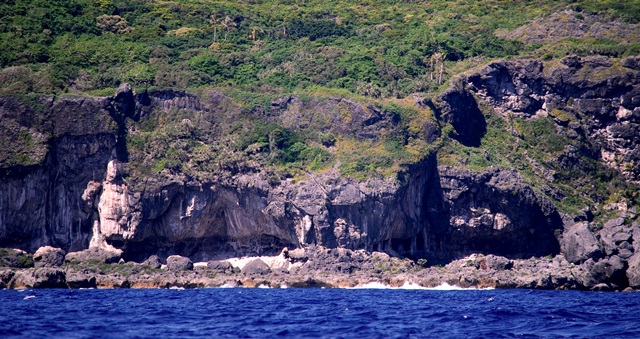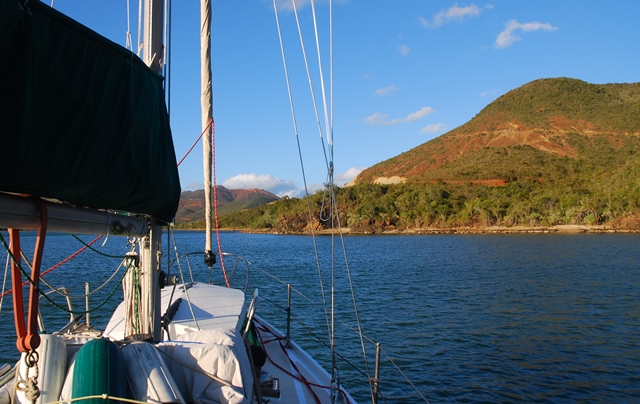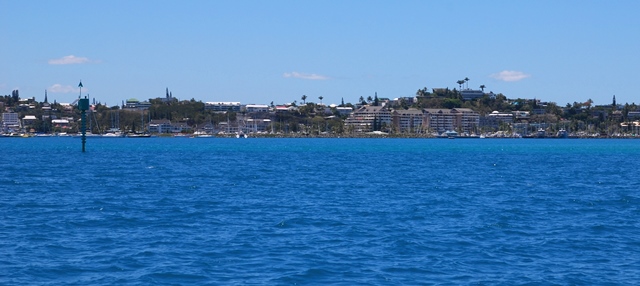Lovely Lifou
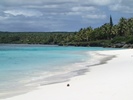 |
October 24th - October 29th Exploring the town of We on the island of Lifou and bashing our way against the wind to Noumea on Grand Terre, New Caledonia. |
This week, we celebrated our one year anniversary of cruising. It is hard to believe it’s already been a year (October 26th to be exact) since we left San Francisco and made that left turn after passing under the Golden Gate bridge. When we started, we weren’t even sure if we would like cruising. Luckily we did, and it’s been an amazing year; I still pinch myself to think of all the incredible places we’ve gotten to see and experience. Our only regret is that we only planned for one year of cruising – there is so much to see in the South Pacific, we wish we could have taken two or three years. However, we keep telling ourselves that this is just our preview trip, and at some point we will do the trip again with more time!
Now that we’ve been out here a year, we are closing in quickly on our final destination of Australia. Our last stop en route to Australia is New Caledonia. New Caledonia is a French territory and consists of several islands; among these are the largest and main island called Grand Terre and three smaller islands just east of Grande Terre called the Loyalty islands. After our passage from Fiji, we stopped at the island of Lifou in the Loyalty islands first. The port captain at the town of We said we could stay two days before we needed to depart for Noumea, the main port of entry for New Caledonia on the main island of Grand Terre. We spent our two days cleaning up the boat from our passage and exploring the town of We.
The marina in the town of We, Lifou. The water looks like a swimming pool!
This has got to be the clearest water I've ever seen in a marina. I guess it helps that there are only about 15 boats here...
One of the first orders of business was to find a grocery store to get some fresh produce. Conveniently, there is one just across the street from the marina. Going into the store reminded us about one of the best things of being in a French territory again: inexpensive, delicious crusty baguettes and brie! Most of the produce looked like it had been sitting around for a few weeks too many, but the bread and brie more than made up for it. That is something we could live on for a long while if we had too! J Later we walked down the main road to town, passing many native houses. The natives of New Caledonia are called Kanaks and their traditional houses are similar in construction to the thatched huts of Fiji, except instead of being rectangular, the buildings are round, with a roof that is shaped like a cone.
One of the Kanak round huts.
Once in town, we passed by a large lodge where we saw lots of Kanaks, all dressed up, milling about the yard and going in. We walked closer and peered in the windows to see a celebration of some sort in progress with large tables of food laid out. We asked a woman nearby (that happened to speak a bit of English) what the occasion was. We learned they were celebrating the completion of a large cultural center in town, and holding a feast to acknowledge all the people who worked on it. She told us it was the Kanak way to hold a feast when a building was completed, and that they celebrate the construction of a neighbor’s house the same way. Then she said we could go in and share in the feast if we would like. We thanked her, but declined, not wanting to intrude on their community celebration (especially since it was for people who had worked on getting the center completed). We continued on up the road and found a tourist info center that happened to be open. There we learned that the “slow food” association was putting on a festival the next day that would feature a produce market and traditional dancing and singing in the morning. It sounded perfect! We completed our explorations of town by a walk on the beautiful beach. The beach has some of the finest white sand we have ever seen, and it provided a beautiful contrast to the startlingly clear blue ocean water. The beach was also very clean, there was no trash in sight.
The lodge where there was a celebration of the completion of a cultural center.
Walking by the church in town.
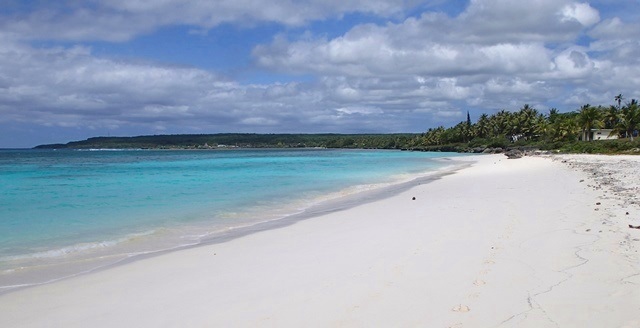
The beautiful beach in the town of We.
The water color contrasting with the fine white sand looked unreal.
The next morning we walked over to the festival and found a great produce market. I finally got to stock up on fresh fruits and veggies! We found out they call it “slow food” because fresh produce is the opposite of “fast food.” A little later, the first dance group came out to perform. The dance group consisted of both adults and kids. The adults stood in the back and sang or played instruments while the kids performed different dances. During the performances, adults from the audience would come forward and deposit 1000 franc notes in the performer’s costumes, or on the sand in front of the performer. It seems gift giving is a very important part of Kanak culture and they regularly exchange money or gifts. After the festival, we returned to the boat to finish prepping it for our departure the next morning.
Arriving at the festival the next morning.
Two of the ladies selling their produce at the market.
Youngsters performing a traditional Kanak dance while the adults provide the music.
The water around Lifou is so clear and beautiful, we thought we would try to find an anchorage our first night where we might be able to jump in and do some snorkeling. We set out early in the morning, and rounded the northern tip of Lifou, which is all cliffs with columnar pines growing on top. As we started to head south along the western coast, the wind picked up quite a bit (as it tends to do every afternoon here) and by the time we reached our anchorage in the late afternoon, it was blowing about 20 kts. Not to mention, the wind is quite chilly here! We actually had to pull out our fleeces. The cold wind and 1-2 ft wind chop deterred us from jumping in and snorkeling and instead I made a warm soup.
The cliffs on the northern end of Lifou.
One of the cliffs looked like a turtle standig up (left side).
The next morning, we continued south to the island of Grand Terre. The wind was blowing from the SE, so the going was slow. We were sailing close hauled and bashing into 2 m waves. It took us a full day and night to reach the southern tip of Grand Terre. During our nightwatches, it was so cold we needed to wear our fleeces with full foul weather gear to stay warm. It feels a bit sad to know we are slowly leaving the tropics and entering cooler climates again. By the time we finally reached the western side of Grand Terre (where Noumea is located) it was already late afternoon, so we decided to anchor in one of the sheltered bays instead of trying to enter Noumea harbor in the dark. Unfortunately, the bay nearby happened to be where they mine nickel ore, so our view was of strip mined hillsides and we enjoyed the lovely sounds of bulldozers and the engines of tugboats zooming back and forth loading up a cargo vessel all night. We left early the next morning and made it to Noumea a bit before noon. We will spend a few days here working on some boat repairs (surprise surprise) before starting our final leg to Australia.
Anchored in the bay where they do strip mining.
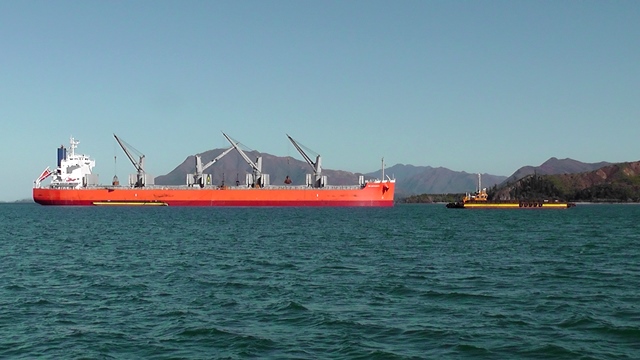
Our neighbors in the bay.
Entering the Noumea harbor and back to the city life.
